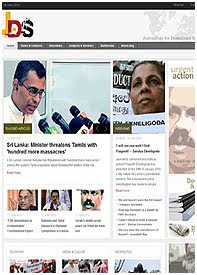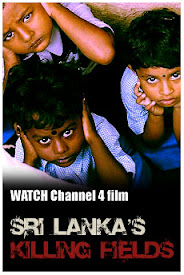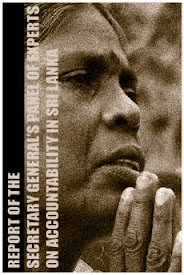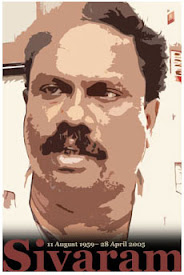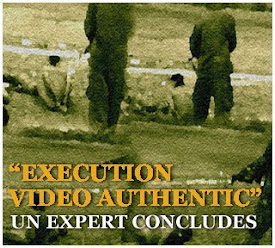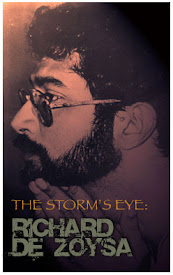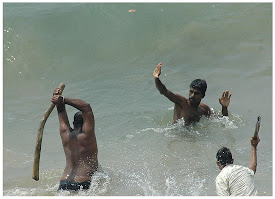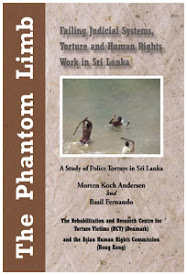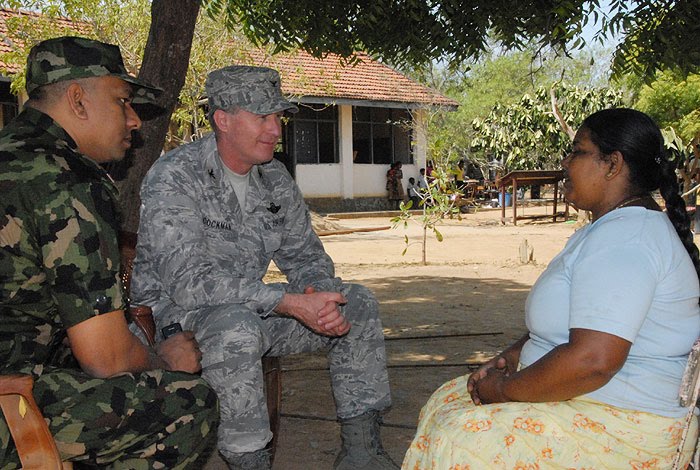
Photo Courtesy: Sgt. Mike Hammond | U.S. Air Force
By Master Sgt. Mike Hammond | Pacific Air Forces
.............................................................................................................................................................................................
Earlier this week, Principal Ranjaney Fernando, of the Semandaluwa Kanista Vidyalaya primary school here where Pacific Angel renovations are currently underway, told journalists that the school lacked a consistent power supply to operate the school's single computer. The journalists then shared the request with U.S. Air Force Col. Wesley Cockman, Pacific Angel-Sri Lanka commander.
After learning of the request, Colonel Cockman coordinated with the U.S. Embassy in Colombo and U.S. Pacific Command in Hawaii to secure funding under the U.S. Department of Defense Security Cooperation Agency's Overseas Humanitarian, Disaster, and Civic Aid program. Within 48 hours, the funding request was processed, reviewed and approved, paving the way for the Pacific Angel- Sri Lanka team to provide the school a generator, computers and associated equipment.
"I am thrilled the request was approved," Colonel Cockman said upon hearing the news. "This funding will allow us to purchase equipment from Sri Lankan vendors and further enhance the ability of the school's dedicated staff to provide quality education to the 90 students there. In addition to the support from the U.S. Embassy in Colombo and U.S. Pacific Command, a key figure in this process has been Mr. Mohammed Nazmi, the mayor of Puttalam. He promised to provide the fuel which will be necessary to sustain the generator for the school. This was a very short notice opportunity, and it will be my great pleasure to witness Mrs. Fernando's reaction when she hears the good news for her school!"
A joint and combined team of U.S., Sri Lankan, and Mongolian civil engineers continue repairs at the Semandaluwa Kanista Vidyalaya and Mahasiyabalagaskada Vidyalaya (Neriyakulam) schools this week, planning to conclude the operation August 22. The engineering civic assistance programs, along with medical care and education missions, are part of Operation Pacific Angel-Sri Lanka. Pacific Angel is a U.S. Pacific Command-led program that aims to build cooperation and partnership. The effort in Sri Lanka is the fourth and final Pacific Angel of 2010. Four more Pacific Angel operations are planned for 2011 in other Asia-Pacific region.
© Pacific Air Forces
Saturday, August 21, 2010
U.S. forces to present Sri Lanka school with power generator
Saturday, August 21, 2010
Seven myths about the Tamil refugees

By No One Is Illegal-Vancouver | Rabble.ca
.............................................................................................................................................................................................
As of Wednesday, initial hearings had been completed for about 100 of the migrants. All were ordered to be re-incarcerated in the Fraser Correctional centres and Burnaby Youth detention centre, while officials are confirming their identities. It has been revealed that after seizing the belonging of the migrants into two large U-Hauls, Canadian Border Services Agency failed to keep records to tag the belongings and documents to each individual. This is causing an unnecessary and oppressive delay, and is even more objectionable since same thing happened to the Tamil refugees who arrived last fall on the ship Ocean Lady.
The detention hearings have been opened to media, though identities cannot be published, but are closed to representatives of community organizations. Priorities for hearings are being given to the 25 mothers and 54 children, who are being held together at the Burnaby Youth Detention Centre. It was announced Thursday that one boy was separated from his father, with whom he had been travelling, and held at this detention centre.
This week, No One Is Illegal has announced a national day of action to call for the immediate release of the detained Tamil asylum seekers, an end to racist and restrictive refugee policies, and to demand "Let the Boat Stay!" Actions are being planned in Vancouver, Victoria, Ottawa and elsewhere. Details are found here and an online petition can be found here.
In the meantime, here are some myths about the case:
Myth 1: They are illegals who are jumping the queue
There is no "queue" for refugee claimants. Refugees are forced from their homes in emergency situations due to human rights abuses committed during wars, military occupations, or persecution against a minority group. We cannot expect refugees to wait for Canada to select them from overseas. We must understand that they undertake long and dangerous journeys to protect their lives and the lives of their families. According to the 1951 UN Convention on Refugees, to which Canada is a party, there are no penalties on refugees who arrive without pre-authorization and irregularly.
Myth 2: We have to crack down on human smuggling
Public Safety Minister Vic Toews and Stephen Harper recently declared that Cabinet is "strengthening its laws" to clamp down on migrants and "make this country less welcoming for future shipments of human cargo."
Many refugees have no choice but to use irregular means, including resorting to smugglers, to flee persecution. As a report by the International Labour Organization discusses how many smuggling operations are "difficult to distinguish from legitimate work of travel agencies or labour recruitment agencies." It is not criminal organizations but anti-immigration policies that are the biggest facilitators of human smuggling. Given increasingly restrictive immigration and refugee policies, how are most people able to migrate if not with the assistance of smuggling operations? By today's standards, Harriet Tubman's Underground Railroad would have been considered a human smuggling operation!
It is also important to note that the rhetoric against human smuggling is not intended to ‘protect' victims of smuggling (who are routinely detained and deported), but to reinforce securitization of the border. In the Canadian government's new post-9/11 laws, it does not need to be proven that harm to persons or damage to property took place in order to secure a life sentence for smuggling; the simple act of moving 10 or more people across borders without state permission is sufficient. Such measures only lead to higher fees being charged and to more unsafe routes of migration.
Myth 3: They are terrorists
There is no evidence to substantiate this. Rohan Gunaratna, the government's primary source, has already been discredited by lawyers as well as an Immigration and Refugee Board adjudicator for being uncredible. Last October, when the 76 Tamil asylum-seekers came on Ocean Lady they were similarly labeled as terrorists and security threats. However by Jan. 2010, they were all released from detention when Canadian Border Services Agency admitted they had no evidence of a terrorist connection.
Furthermore, officials are just relying on stereotypes of Tamils as all being associated with the Tamil Tigers to create unnecessary racist hysteria and mistrust of asylum-seekers. National security laws in the post-911 climate have directly targeted and marginalized immigrants, refugees, and racialized people. These laws and policies are less about protecting society than creating a culture of fear. Many of these policies -- such as Security Certificates -- have been struck down in the courts after years of human rights and anti-racist campaigning. The rhetoric of the War On Terror serves as a convenient distraction from the reality that people's daily lives are increasingly unsafe and insecure due to global neoliberal economics and war-mongering that leads to mass displacement, poverty, and human rights atrocities.
Myth 4: The situation is getting better in Sri Lanka
According to a 2010 Amnesty International report, in the past 12 months the Sri Lankan government has continued to jail critics and clamped down on dissent. Some 80,000 Tamils remain in refugee camps, while 400,000 displaced Tamils survive in communities where homes and infrastructure were destroyed. The government continues to extend a state of emergency, restricting many basic human rights, and thousands of arbitrary detentions are justified under the guise of detainees being suspected Tamil Tigers. This past month, UN Secretary General Ban Ki-moon appointed a panel to investigate war crimes and genocidal acts committed by the Sri Lankan government against Tamils.
Myth 5: They are a burden on taxpayers.
The biggest resource expenditure has been the government's choice to spend thousands of dollars in an unnecessary security operation, including resources spent on incarcerating women and children. Only a tiny fraction has been spent on the health and well-being of the migrants, whose lives are worth more than dollars. Furthermore, scapegoating migrants for being a financial burden lets the government off the hook. All residents continue to receive inadequate access to necessary social services because of misplaced government priorities -- choosing to bail out banks and sink billions into the police and military -- not because of the lack of resources to provide a social safety net for all in need.
Myth 6: Canada has a generous refugee system; we cannot keep accepting people.
Despite border panics, only a small minority of asylum seekers make claims in the Western world. There are about 20 million refugees worldwide and most migrate into neighbouring countries of Africa, Middle East, and South Asia. Canada accepts fewer than 20,000 refugees per year, which is less than 0.1 per cent of the world's displaced population.
Furthermore, Canada's system is not generous. Deportations from Canada have skyrocketed 50 per cent over the last decade, with 13,000 deportations in the past year. With the Conservatives, the number of approved asylum claims has dropped by 56 per cent. Minister of Immigration Jason Kenney's recent refugee reforms create two tiers of refugees, establishing a hierarchy based on nationality. There are countless structural flaws in the system, designed to make it near impossible to claim asylum. Immigration and Refugee Board members are political appointees; certain avenues such as the Pre Removal Risk Assessment have acceptance rates of three to five per cent while others, such as the Humanitarian and Compassionate claim, do not have to be processed prior to deportation. In addition, the refugee system has been termed a "lottery system" because acceptance rates can vary from zero to 80 per cent depending on the judge. The Safe Third Country Agreement between the U.S. and Canada creates a "Fortress Canada" by disallowing up to 40 per cent of asylum seekers.
Myth 7: It is not our problem.
The Canadian government has recently been forced to apologize for racist and exclusionary historical measures including the Chinese Exclusion Act and SS Komagata Maru incident.
These apologies and the rhetoric of multiculturalism is hollow when current policies and practices perpetuate racism and exclusion. The recent backlash that repeats the tired-old refrain about "illegals" and "criminals" has meant that right-wing neo-nazis such as Paul Fromm and the Aryan Guard have resurfaced publicly and are being given a platform to spew their hate about sending the boat back. Is this really the side that we are on?
Immigration and refugee issues are not simply about Canadian benevolence or charity. We need to rethink what function and whose interests the state border actually serves. The current trends of global migration reveal the ways in which patters of Western domination and corporate globalization have enriched some countries by creating economic and political insecurity that forces people indigenous to their lands to migrate. The Canadian government continues to maintain economic and diplomatic ties with the government of Sri Lanka, instead of supporting those who have survived the brutality of that government, which makes us complicit in their displacement. Also, we must always remember that Canada is a settler country, built on the theft of Indigenous lands and the forced assimilation of Indigenous communities. On what basis is a colonial government denying colonized people their right to livelihood? Finally, we must challenge the idea that some are more worthy than others to a life of dignity; instead we should reaffirm the universal value that people have the freedom to move in order to seek safety and to flourish.
© Rabble.ca
Saturday, August 21, 2010
India expands presence in Sri Lanka

By Sutirtho Patranobis | Hindustan Times
.............................................................................................................................................................................................
India would be the first to open consulates in both the places.
Besides a large High Commission in Colombo – the biggest Indian mission after the one in Kathmandu -- India also has an Assistant High Commission in Kandy to cater to the needs of the Indian-origin Tamils who live in the central hill districts.
Tamil majority Jaffna has had historical links with parts of southern India and many from the peninsula continue to visit India. A visa processing centre is already functioning from Jaffna town.
The consulate in Hambantota, Rajapaksa's home district, is being looked upon as India's efforts to keep track of developments in the arid southern regions.
Hambantota, around 260 km south-east of Colombo, is where China is building a port and would follow it up with an airport. The three-phase port project is by far one of the biggest Chinese projects in Sri Lanka and is worth $ 1.5 billion.
On Friday, an Exchange of Notes – formalising what was agreed between Singh and Rajapaksa – took place between Indian High Commissioner Ashok K Kantha and Lankan foreign secretary, CR Jayasinghe on the two consulates.
It was agreed that the jurisdiction of the Jaffna consulate would cover the five northern districts Jaffna, Kilinochchi, Mullaitivu, Vavuniya and Mannar – among the districts which bore the brunt of the war with the Tamil Tigers in the last phase.
The Hambantota consulate will cover the districts of Galle, Matara, Hambantota and Moneragala.
As a measure of reciprocity, India has also welcomed Sri Lanka's interest in opening a third diplomatic post in India after New Delhi and Chennai.
© Hindustan Times
Saturday, August 21, 2010
Lessons from Sarajevo for Tamil refugees

By Goran Simić | The Globe and Mail
.............................................................................................................................................................................................
In the middle of the tunnel, two brothers heading in opposite directions bump into one another. They immediately begin shouting the same words: “Where the hell are you going? There is nothing there.”
I still feel the weight of that question mark.
As I watch the news about the Tamil refugee claimants touching shore in Vancouver, I think of the Siege of Sarajevo, which lasted longer than the Siege of Leningrad. Though every survivor has the right to tell his own stories, I published some on behalf of the 10,000 who were killed – by the daily barrages of sniper bullets, by grenades, by hunger. Even I was killed once – when the newspaper published my name on the list of victims of the 1992 bombing of the city.
Three years of suffering
That day I felt like a ghost walking the streets, trying to persuade my neighbours and friends that I was still alive. My two children got their own portion of horror – learning to catch rainwater dripping from our ceiling holes, facing an empty fridge after the city's food supply was cut off, listening to the horrible silence of the telephone receiver after the central Tele-Post Building had its power cut. Not to mention that now, after the war, innocent fireworks still cause a sudden nausea in the stomachs of all of us who ever heard a real bomb exploding.
To talk about my three years of suffering, I need three years, with additional time for the list of family and friends I lost, but I am not a masochist.
During the Siege of Sarajevo, I began to feel a strange duality about my writing: As a poet, I want to capture reality dressed in the witness outfit; and on the other hand, I try to forget that whole part of my life.
I am in the middle again. At a poetry reading in Montreal, I was asked by a grim-looking woman in the audience whether I had ever talked to a psychiatrist after I came to Canada and I answered that I didn't, “because it's cheaper to talk to my readers.” Later, speaking privately with the woman, I felt ashamed when she showed me the scars on her arm, from a bomb blast in some Pakistani city I never heard of – the city she came from.
I apologized for making a joke of her question. She apologized for asking me that question. Suddenly we became polite Canadians, but members of a club that most Canadians have nothing to do with. Especially the Canadians blind to the news from other countries, the ones who don't realize that once you deny the problems in your neighbourhood, there's a good chance that same problem will knock on your door.
I arrived in Toronto from Sarajevo with two children and a broken former life. It didn't take me long to realize that my published books were worth nothing. I knew I would never get a loan from the bank by offering my work as collateral, as Canadian poet Gwendolyn MacEwen once attempted. Especially books written in the Serbo-Croatian language, which officially ceased to exist after my old country broke into six parts.
“Do you have a credit history?” I was asked by the bank clerk, who appeared to believe she had a mentally-ill person or just-released bank robber standing in front of her. That moment the pain in my stomach became my guide.
Instead of a loan, I was forced to find work as a labourer, loading and unloading trucks. That adventure lasted several years, till doctors advised me to give it up.
Then I became a full-time Canadian. I waited in long queues at food banks with my first-generation fellow Canadians. I waited for welfare cheques and listened to welfare clerks asking me to get a job ASAP. The humanitarian aid we received during the siege had more variety. At least there, after waiting hours for food, you might find a few bullets in your shopping bag on the way home, and surprise your kid who collects war trophies.
If I had missed becoming a Canadian, I would never have heard Ana from Poland telling me, while waiting in front of the food bank kitchen, that she worked as a cleaning lady for three restaurants to pay for her kids going to flute lessons.
'Us' and 'Them'
Or the story of the young Mexican man Rulfo, who earned his wage as a boxing partner in matches that people bet on in a private club somewhere in Mississauga. He didn't know the address because he was always blindfolded. Five hundred if he won the match. Sometimes double if he lost.
If I hadn't come to Canada, I would never have learned about the huge, invisible distinction between “us” and “them.” As a Canadian still romanticizing my new beginning, I published some books that hurt me as much as my readers. Judging by the letters I received from recent immigrants, I had infected them with the old terrible illness inherent in the question: “Why do they want me if they do not love me?”
As an immigrant, I feel like I belong to the most fragile category of people. It doesn't make it any better to hear that a third of the world's population carries a passport different from their place of origin. I didn't renew my Bosnian passport after it expired. What do statisticians know about the soul?
This summer, as the Sarajevo Film Festival welcomed film stars from around the world, the city also served as a red carpet for Bosnians who live elsewhere. A third of the pre-war population now lives in other countries like Australia, Canada or Sweden. They carry a simple, mocking label: diaspora.
They are like seasonal farm workers, returning to harvest some memories, while wondering why their children would rather communicate in English than Bosnian. They think of the sharp message in the words of my friend, the poet Asim Brka: “Peace kills those who believe they survived the war.”
That's the easiest way I can think of to finish my thoughts, before someone asks, “Why did you come here?” Before I start thinking about the hardest part of my life in Canada: making myself visible.
Goran Simić, one of the most prominent writers of the former Yugoslavia, was trapped in the siege of Sarajevo. In 1995 Simić and his family were able to settle in Canada as the result of a Freedom to Write Award from PEN. His poetry has been included in several world anthologies, such as Scanning the Century ( Penguin, 2000), and Banned Poetry (Index of Censorship, 1997), and in numerous anthologies in Canada and the former Yugoslavia.
© The Globe and Mail
Saturday, August 21, 2010
Sri Lanka embarking on troubling political trajectory

By Paikiasothy Saravanamuttu | Jakarta Globe
.............................................................................................................................................................................................
However, current policy is on a different trajectory, in which economic development is posited as the panacea to achieve peace, reconciliation and national unity.
Economics is not only given precedence over politics but it is assumed that economic development will blunt political aspirations and grievances.
Civil and political rights are at best considered to be of secondary importance. In pursuing economic development with the same single-minded purpose it pursued military victory, President Mahinda Rajapaksa’s government intends to change the political culture of the country from the more boisterous and pluralistic one shared with India and characterized by an implicit faith in democratic norms and traditions to a more disciplined one.
While the end of the war has ensured an increase in economic activity, it has by no means guaranteed that the expected post-war boom will underpin the government’s ambitious plans to make Sri Lanka a key economic hub of South Asia. Economic projects for the former conflict areas in the north and east, designed and implemented from Colombo with little local consultation, arouse suspicions about colonization in the guise of development.
The emphasis is currently on tourism and infrastructure, with considerable dependence on increasing Chinese and Indian investment.
The government has also taken a substantial IMF loan that entails considerable reduction in the budget deficit and public spending as well as the re-orientation of economic ties toward Asia’s emerging powers.
There appears to be no urgency with regard to a political settlement of the ethnic conflict. The recent focus of constitutional reform has been on the removal of the two six-year term limit on the executive presidency. A resolution of the ethnic conflict revolves around long-stalled provincial devolution. Despite preliminary talks between the regime and the main Tamil party, the Tamil National Alliance, there has been little progress on giving more powers to the provinces within a united Sri Lanka.
The situation of displaced persons, though far removed from their incarceration in camps by the tens of thousands immediately after the war, is far from settled. Some 30,000 out of the initial 300,000 still remain in camps along with another 10,000 surrendered fighters, who have been denied access to the International Red Cross.
The majority of those let out of the camps are still in transit camps and with host families.
The government’s unwillingness to reverse the culture of impunity in dealing with human rights violations is at the heart of criticisms by local and international civil society organizations.
UN Secretary General Ban Ki-moon has set up a panel on this issue in the face of strident objections from the Rajapaksa government.
A leading cabinet minister led an attempted siege of the UN compound in Colombo and embarked on a hunger strike unless the panel was disbanded.
Ban, however, stood firm and the fast was abandoned after two days.
Sri Lanka has also lost the European Union’s preferential trade concessions after failing to ratify and effectively implement 27 international human rights instruments and labor standards.
The government’s response has been to allege infringements of national sovereignty by the West.
It says the criticisms are unfair since it has established a post-war Presidential Commission on Lessons Learnt and Reconciliation. Sri Lanka, however, has a dismal record on such commissions.
Peace without unity, unity without reconciliation, and reconciliation without accountability — these are the dilemmas that both the regime and society will have to bridge if Sri Lanka is to fully grasp the historic opportunity presented by the end of the war. Only then can Sri Lanka transform from a post-war environment to a post-conflict period of growth and reconciliation.
Paikiasothy Saravanamuttu is the executive director of the Center for Policy Alternatives in Sri Lanka. Pragati, the Indian National Interest Review, is a monthly magazine on strategic affairs, public policy and governance.
© Jakarta Globe
This site is best viewed with firefox

Search
Is this evidence of 'war crimes' in Sri Lanka?
Archive
- ▼ 2010 (1312)
- ► 2011 (687)
Links
- Reporters Sans Frontières
- Media Legal Defence Initiative
- International Press Institute
- International News Safety Institute
- International Media Support
- International Freedom of Expression eXchange
- International Federation of Journalists
- Committee to Protect Journalists
- Asian Human Rights Commission
- Amnesty International
